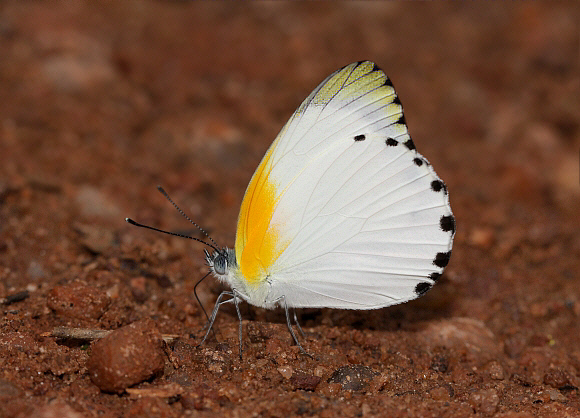
Introduction
There are about 23-28 species that are currently accepted as members of Appias, comprising 7-8 species from the Australian region, 16-20 from the Oriental region, and 6 in Africa. It is difficult to be precise about numbers as there is uncertainty regarding the taxonomic status of some species.
At first glance Appias sabina can be mistaken for certain Mylothris species, but in Appias the apex on the forewing is more acute. In similar Mylothris species, e.g. poppea and rhodope, the apex on the underside is white, and has prominent black marginal spots. In sylvia the apex is dusted with black and yellow scales, and the black spots are small and do not extend onto the costa. Appias are palatable to birds, and are considered to be Batesian mimics of the noxious Mylothris species.
Appias sylvia is a common and widely distributed species found across most of sub-Saharan Africa from Senegal to Sudan, and south via Cameroon, Gabon and Congo to Uganda, Malawi and western Kenya ( Kakamega ).
Habitats
This is a forest species, often seen along logging roads, but is migratory in behaviour so can turn up in savannah / woodland habitats, botanical gardens and city parks.
Lifecycle
The larvae feed on Phyllanthus, Drypetes (Euphorbiaceae), and Ritchiea (Capparaceae).
Adult behaviour
Males are commonly seen imbibing moisture from forest roads, typically in groups of 2 or 3 amidst aggregations of Belenois, Eurema and Mylothris.
